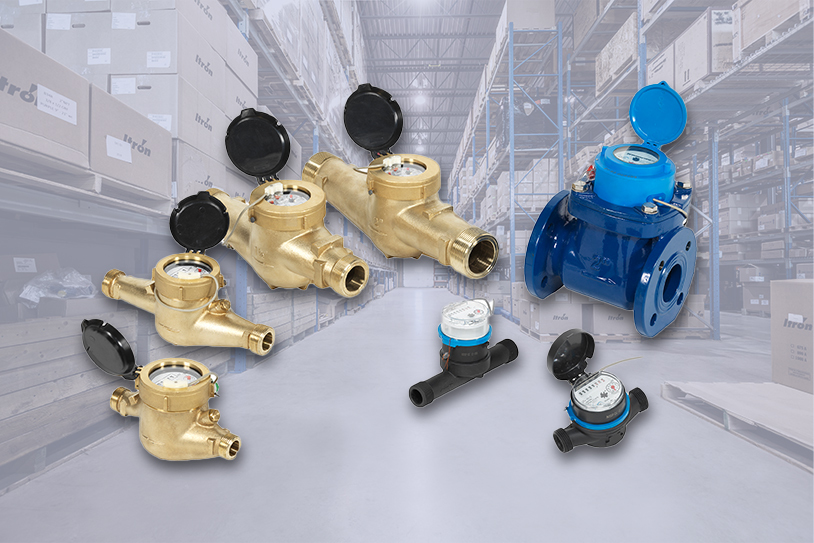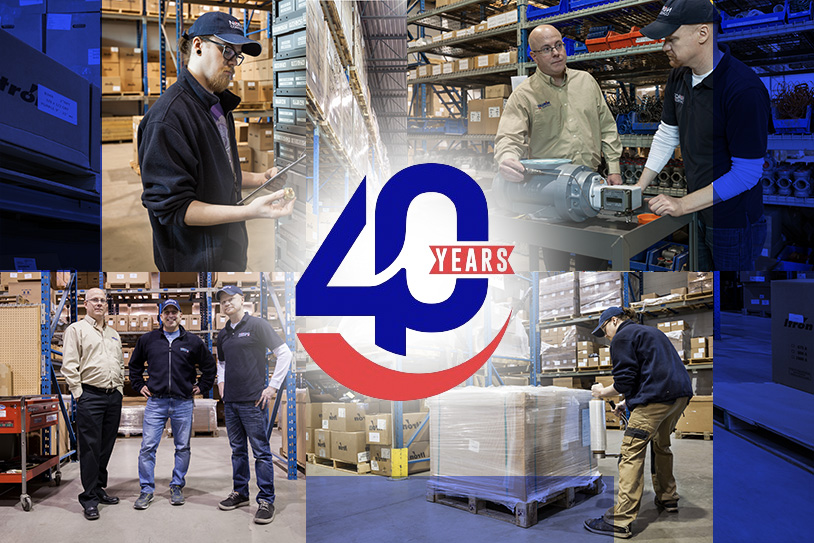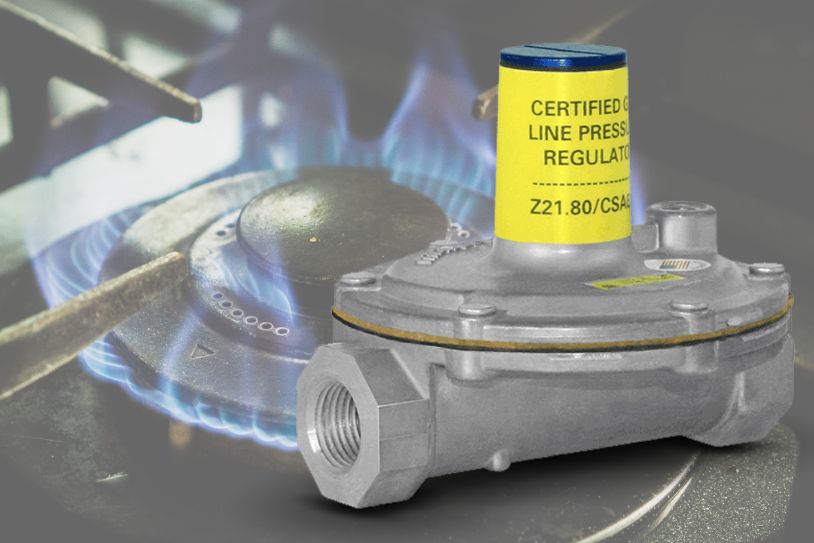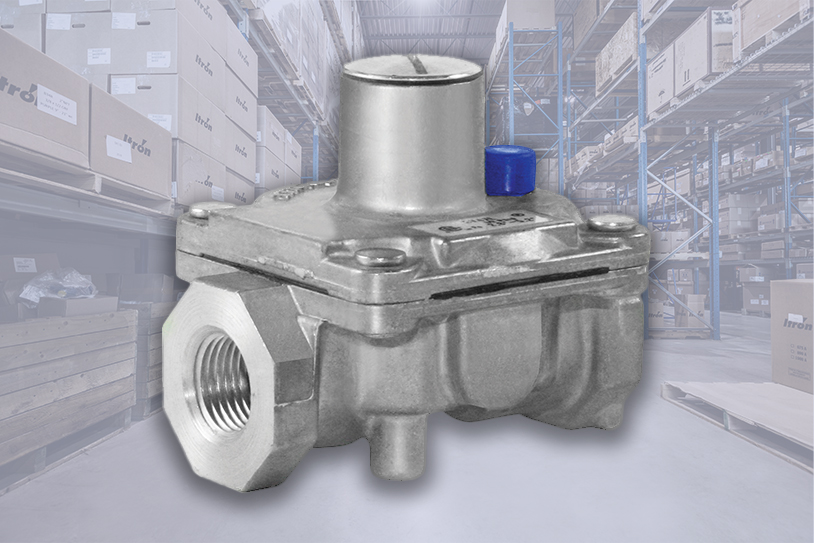Learning About Water Meter Types

Measuring water usage in applications across residential, commercial and industrial installations requires a variety of water meter types. Here is an overview of the different water meter types, how they are used, and how to choose the right one for your application.
What is a Water Meter and What Does it Do?
Water meters measure the quantity and volume of water that passes through a pipe or outlet. The standard measurements used are gallons or cubic feet. With these metrics, you are able to record the cumulative volume of water passing through the meter.
Water flow meters are used to measure not only the volume of water passing through but also the different characteristics of the liquid such as:
- Speed of flow
- Quantity used
- pH balance
- Quality
- Electric conductivity
Water flow meters calculate water bills but can also provide indications on how much of a liquid to add to a process or product.
What Are the Most Common Water Flow Meter Types?
When it comes to monitoring the flow of water within any system, there are typically four types of water flow meters that could be used.
1. Positive Displacement Meters (PD Meters)
PD water meters are mainly used in residential and small commercial settings. They are very accurate when the flow is low to medium. This type of mechanical water meter has a measuring element that is displaced in direct proportion to the volume of water that passes through. A magnet within the meter then drives the register to record the volume.
2. Velocity Flow Meters
Velocity flow meters are used to measure the rate and speed of the water through the meter. These mechanical water meters convert the speed of the flow to volume to help determine consumption accordingly.
Within the velocity flow meters, you’ll find three different water meter sub-types: Single and multiple-jet water meters, turbine water meters, and compound water meters.
Single and Multiple Jet Water Meters
These water meters contain a blade that rotates at a known speed, not necessarily that of the water. This blade is rotated by water jets, an internal strainer grid within the meter prevents the jets from clogging. Effective at low water flow and small diameters, their primary use is for secondary billing in domestic, water monitoring, batch control and small industrial applications.
- Single Jet Meters:
These meters are a low-cost option. They use a single port to create a jet of water. There is a direct single impact making the turbine rotate. The rotating turbine transmits its motion to a display mechanism used to measure the passing volume.
Single jet water meters are of simple design, with an internal strainer element for the protection of the mechanics. They are very reliable for sub-metering applications.
- Multi-Jet Meters:
These meters have multiple ports surrounding an internal chamber with each port creating a jet of water that hits an impeller. Multi-jet meters retain accuracy at lower flow rates as the load is evenly placed across the rotor blade. Their design means they are ideal for large water users and industrial water installations. Since they record real-time data, you are able to get immediate information as to any change in water consumption.
See Norgas Single and Multiple Jet Water Meters
Turbine Flow Meters
Turbine-type meters are used in large pipe diameter situations ideally for lower flow rates with high volume. This type of water meter has blades on an internal rotor. These blades are angled to rotate using the fluid that moves around it clockwise or anticlockwise.
The speed of the blades is measured by attaching a magnet to them. This magnet connects with a piece of metal embedded in the meter at a relevant point to accurately judge the speed of the water. Impressively, these sensors work regardless of the direction of the fluid through the turbine flow meter.
See Norgas Turbine Water Meters
Compound Water Meters
Compound water meters are used to accurately capture measurements where rapid and wide fluctuations in water demands are present. These meters use turbine and positive displacement technologies to gauge these measurements.
With compound water meters, you take two sets of meter readings. There is a larger meter for high flow and a second, smaller meter, for the low flow. These readings are added together, and you can then bill the customer for the combined usage.
3. Electromagnetic Water Meters
Also known as mag meters, electromagnetic water meters have no moving parts and measure volumetric flow with high accuracy. With no moving parts, maintenance and repair costs are reduced. These water meters use a magnetic field to produce and route liquid down a pipe. When the liquid flows through the magnetic field, it creates a voltage signal. The faster the flow of water, the greater the voltage which is translated into a reading.
4. Ultrasonic Water Meters
Ultrasonic water meters use ultrasound to measure the speed of the fluid. This is a significant technological advancement allowing property owners and managers to accurately record information in real-time. As the information is so accurate, it helps avoid billing disputes. In addition, these meters have a long-life expectancy as they have no moving parts.
There are two types of ultrasonic meters with different uses: Transit time ultrasonic flow meters and Doppler ultrasonic flow meters.
Transit Time Ultrasonic Flow Meters
These meters are very accurate in the low flow range compared to mechanical water meters. They can be installed in any position, so this is very useful in retrofit situations where space is at a premium.
Doppler Ultrasonic Flow Meters
These types of water meters use wrap-around sensors which are installed outside the relevant pipe making them simple and inexpensive. You would usually use these for mining industries, sewage, or any application where there are solids present in the flow. Using a Doppler ultrasonic meter for clean liquids is not as accurate but it can give approximate readings, nonetheless.
Choosing the Right Type of Water Flow Meter
Choosing a water meter depends on a few significant factors:
- Cleanliness of your water
- Budget
- Accuracy of flow measurement requirements
- Flow profile (how thick is the fluid you are measuring?)
- Flow rate (minimum and maximum flow rate measurement requirements)
- Temperature (different meters can withstand different thermal effects.)
- Installation requirements (space, direction, piping configuration)
Choosing the right water meter can make all the difference between effective and inadequate water management. Once you have differentiated which type of water flow meter is best for your application, you must also remember to take running and maintenance costs into consideration. Getting the right information from knowledgeable industry professionals is paramount and expert advice is essential.
If you are looking for a water meter for sub-metering applications that will give excellent accuracy, contact our team today. Our experts will help you choose the best water meter for your application.





